Papers by Paulo Marchetti
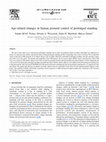
The aim of this study was to characterize prolonged standing and its effect on postural control i... more The aim of this study was to characterize prolonged standing and its effect on postural control in elderly individuals in comparison to adults. It is unknown how elderly individuals behave during prolonged standing and how demanding such a task is for them. We recorded the center of pressure (COP) position of 14 elderly subjects and 14 adults while they performed prolonged standing (30 min) and quiet stance tasks (60 s) on a force plate. The number and amplitude of the COP patterns, the root mean square (RMS), speed, and frequency of the COP sway were analyzed. The elderly subjects were able to stand for prolonged periods but they produced postural changes of lesser amplitude and a decreased sway during the prolonged standing task. Both the adults and the elderly subjects were influenced by the prolonged standing task, as demonstrated by their increased COP RMS and COP speed in the quiet standing trial after the prolonged standing task, in comparison to the trial before. We suggest that the lack of mobility in elderly subjects may be responsible for the observed sub-optimal postural changes in this group. The inability of elderly individuals to generate similar responses to adults during prolonged standing may contribute to the increased risk of falls in the older population. #
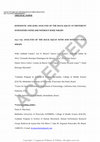
Journal of strength and conditioning research / National Strength & Conditioning Association, Jan 10, 2015
The purposes of this study were to measure the acute effects of knee wraps on knee and hip joint ... more The purposes of this study were to measure the acute effects of knee wraps on knee and hip joint kinematics, dynamic muscle activation from the vastus lateralis and gluteus maximus, and rating of perceived exertion (RPE) during the back squat exercise at two different intensities. Fourteen resistance-trained men (age: 24±4 years, height: 176±6cm, body mass: 81±11kg, back squat 1RM: 107±30kg, 3±1 years of back squat experience) performed one set of 3 repetitions under four different conditions, to a depth of ∼90 degrees of knee joint flexion, and in random order: with knee wraps at 60% 1RM (KW60), with knee wraps at 90% 1RM (KW90), without knee wraps at 60% 1RM (NW60), and without knee wraps at 90% 1RM (NW90). The dependent variables obtained were vertical and horizontal bar displacement, peak joint angle in the sagittal plane (hip and knee joints), concentric and eccentric muscle activation (by integrated electromyography) from the vastus lateralis (VL) and gluteus maximus (GM), and...
Instrumentação em Eletromiografia
Aspectos metodológicos do treinamento de força na promoção da qualidade de vida e saúde (Resistance Training and Wellness)
Prescription and Periodization of Resistance Training in Gyms_2015
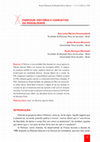
O Parkour é uma atividade física baseada em uma proposta do Método Natural (MN) e do Parcours Du ... more O Parkour é uma atividade física baseada em uma proposta do Método Natural (MN) e do Parcours Du Combattant (PDC). O objetivo do presente trabalho foi revisar aspectos históricos, além dos conceitos fundamentais da modalidade Parkour. George Hébert foi o criador do MN, antagônico à ginástica e à especialização esportiva. Publicou as bases do MN, utilizando gestos naturais e o desenvolvimento físico completo. O PDC, idealizado por Raymond Belle, foi adaptado do MN e do treinamen-to militar básico. David Belle continuou o legado de seu pai, baseado no conceito de que o treinamento deve ser aplicado à vida real e às situações extremas. Concluímos que os aspectos conceituais e históricos do Parkour são fundamentais para definir sua identidade dentro do contexto da área da Educação Física. Palavras-chave: lazer; corrida livre; esporte radical. INTRODUÇÃO Quando se pergunta sobre o Parkour, ouve-se, via de regra, "aquele negócio que o pessoal sai correndo pulando pedras e muros"...
The Cross-Over Effect and Time Course Following Unilateral Plantar Flexors Static- Stretching on Single-Leg Jump Performance and Gastrocnemius Muscle Activity _2014
Planning and Prescription of the Personal Training: from beginner to advanced_2014

Mechanical Proprieties of Knee Wraps_UNESP_2015
As bandas elásticas (BE) são comumente utilizadas no treinamento de força visando o aumento do de... more As bandas elásticas (BE) são comumente utilizadas no treinamento de força visando o aumento do desempenho em força. A literatura científica reporta um aumento de desempenho no agachamento isométrico na ordem de ~21 a 25%), e no agachamento dinâmico de ~19%) Em teoria, a melhora do desempenho ocorre devido às características mecânicas das BE. O mercado esportivo oferece dois modelos distintos de BE, sendo uma considerada "soft" e outra "hard", no entanto, pouco se sabe sobre suas características mecânicas e as diferenças no padrão de auxílio de ambas. Sendo assim, objetivo do presente estudo foi quantificar e comparar as propriedades mecânicas dos dois modelos de BE a partir de um teste de tração e mensuração de suas tramas. Inicialmente as BE (Hard e Soft) foram fotografadas através de um estereoscópio (Zeiss, modelo Discovery V8) com resolução de 1000μm, visando observar as diferenças no espaçamento das tramas. Então, as BE foram preparadas, seguindo as recomend...
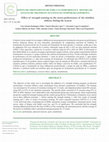
RESUMO O objetivo deste estudo foi investigar a influência de um programa de treinamento com peso... more RESUMO O objetivo deste estudo foi investigar a influência de um programa de treinamento com pesos na performance motora. Quatorze atletas, do sexo masculino, participantes de competições nacionais de triathlon. O treinamento foi desenvolvido em 24 sessões de treinamento de força durante 12 semanas, sendo que a fase de adaptação (FA) teve duração de 8 sessões, utilizando carga de 60% a 65% de uma repetição máxima (1RM). A fase especifica, constou de 16 sessões e utilizou carga de 65% a 80% de 1RM. A intervenção se deu subdividindo-se os sujeitos em grupo experimental e grupo controle, onde o grupo experimental realizou treinamentos com pesos e o grupo controle não realizou treinamentos de força. Foram realizadas avaliações de performance em três momentos distintos: 1. antes de iniciar o treinamento com pesos, 2. após quatro semanas de treinamento e 3. após doze semanas de treinamento. Foi utilizada uma ANOVA (2x3) medidas repetidas para o % de gordura, massa corporal magra, teste de...
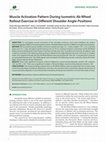
Medical Express, 2015
To investigate muscle activation of the shoulder extensors and trunk stabilizers by surface elect... more To investigate muscle activation of the shoulder extensors and trunk stabilizers by surface electromyography (sEMG) activity during the isometric Ab Wheel Rollout exercise in different shoulder joint positions. METHOD: We recruited 8 young, healthy, resistance trained men (age: 25 ± 3 years, height: 178 ± 5 cm, and total body mass: 81 ± 2 kg). All subjects performed two sets of 10 sec. maximal isometric contractions of the Ab Wheel Rollout exercise keeping the knees fixed on the floor and the arms taut. To perform the exercise, all subjects were randomly assessed in the following three positions related to the angle between the arms and trunk, in random order: arms aligned vertically with the Ab Wheel Rollout exercise (neutral); 90° and 150°. A rest period of 5 minutes was provided between tests. The sEMG signals were recorded in the following muscles: Latissimus Dorsi; Pectoralis Major; Erector Spinae; Rectus Abdominis. RESULTS: There were significant increases in Rectus Abdominis muscle activity between: neutral x 90°, neutral x 150° and 90° x 150°. There was a significant increase in Pectoralis Major muscle activity between neutral x 150°. CONCLUSIONS: The present findings indicate that (a) Ab Wheel Rollout exercise emphasizes the muscle action of the Pectoralis Major and Rectus Abdominis more than the Latissimus Dorsi and Erector Spinae; (b) the level of muscle activation depends on the external force created by the body mass and lever arm from the center of mass.
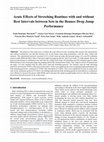
International Journal of Sports Science & Coaching
The purpose of this study was to evaluate the acute effects of static-stretching (SS) session wit... more The purpose of this study was to evaluate the acute effects of static-stretching (SS) session with (intermittent) and without (continuous) rest intervals between sets on the bounce drop jump performance, with the same volume and intensity. The experimental protocol consisted of (1) a brief warm-up using sub-maximal jumps; (2) a preSS evaluation (passive ankle ROM and three trials of maximal single-leg jumping task for each lower limb); (3) ankle plantar flexors SS protocol (intermittent or continuous) was used only for a single-lower limb; (4) immediate post-SS evaluation (passive ankle ROM and three trials of maximal single-leg jumping task for the stretched lower limb). Then, subjects rest for 30 minutes and the topics 3-4 were repeated with the other lower limb and stretching protocol. The intensity used for both stretching protocols was between 70-90% of the point of discomfort. There were significant decrease in jumping height performance for both stretching protocols: continuo...
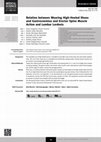
Background: The extended use of high-heeled shoes is considered a possible cause of low back pain... more Background: The extended use of high-heeled shoes is considered a possible cause of low back pain and lumbar hyperlor-dosis. The aim of this study was to investigate the relationship among lumbar and leg muscles activity, lum-bar lordosis, and wearing high-heeled shoes. Material/Methods: Twenty-four adult women (mean age=24) barefoot and wearing heels of 1, 5, and 10 cm height were evaluat-ed during standing. The gastrocnemius and erector spine muscles were measured by surface electromyogra-phy and the angle of lumbar curvature by photogrammetry. Results: There was a correlation between decreased lumbar lordosis and the height of the high-heeled shoes (P£0.05), the 10-cm high-heeled shoes were the ones that caused higher muscular activity, 5.0 µV, followed by the 5-cm high-heel, 3.6 µV; the 1-cm high heel, 2.7 µV; and barefoot, 2.3 µV. The gastrocnemius muscles showed high-er myoelectric activity (14.79%) than erector spine muscles (13.53%). The myoelectric activity of the evaluat-e...
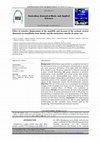
Background: Malocclusion may present no symptoms but due to the increased of stress on oral struc... more Background: Malocclusion may present no symptoms but due to the increased of stress on oral structures and masticatory muscles can cause structural alterations. Forty-eight male rats (Wistar) were divided in the VD group subjected to bilateral increase of occlusal vertical dimension, MR group subjected to retrusive displacement of the mandible and control group. Bone density assessment in the hemimandible was carried out through standardized digital radiographies and biopsies were done in the superficial portion of the masseter muscle and in the posterior region of the temporalis muscle for histochemistry analysis. Objective: The aim of this study was to investigate the biological changes of the mandible bone tissue and the morphology of the masticatory muscles fibers of Wistar rats subjected to malocclusion. Results: For bone density, the base of the mandible decreased 1% in VD group and increased 5,2% in MR group. For histochemistry evaluation there were predominance of FG fibers ...
Biomecânica Aplicada (Applied Biomechanics)
Técnicas de estimulação neuromuscular para avaliação de déficits de força: uma breve revisão.
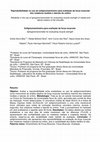
Objetivo: Avaliar a reprodutibilidade entre avaliadores no uso do esfigmomanômetro como instrumen... more Objetivo: Avaliar a reprodutibilidade entre avaliadores no uso do esfigmomanômetro como instrumento de análise objetivo da força muscular isométrica máxima dos rotadores mediais e laterais do ombro. Metodologia: Trata-se de um estudo transversal realizado na Clínica de Fisioterapia da Universidade Nove de Julho, aprovada pelo comitê de ética da instituição. Foram selecionados 15 voluntários (média de idade 26,6±5,16 e Índice de Massa Copórea médio 24,25±4,22) Um esfigmomanômetro e uma cinta inextensível foram utilizados para coleta da contração isométrica voluntária máxima, durante 5 segundos, dos rotadores mediais e laterais do ombro. Todo o procedimento foi realizado por dois avaliadores e repetido após 48 horas. Resultados: Os dados obtidos por ambos avaliadores e nos dois dias de coleta mostraram não ter diferença (P>0,05) e apresentaram alta confiabilidade para os rotadores mediais e rotadores laterais. No entanto, observou-se alta variabilidade neste método de avaliação. Conclusão: O esfigmomanômetro não apresentou boa reprodutibilidade na avaliação da força muscular dos rotadores mediais e laterais do ombro, pois a variabilidade dos dados obtidos foi alta.
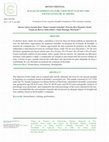
O objetivo deste estudo foi avaliar e classificar o nível de força de forma indireta os músculos ... more O objetivo deste estudo foi avaliar e classificar o nível de força de forma indireta os músculos do core em indivíduos ingressantes de academia baseados na proposta de avaliação de Kendall. A amostra foi composta por 1317 alunos ingressantes de uma academia de ginástica de São Paulo, submetidos a uma bateria de testes de avaliação física, sendo 536 do sexo masculino e 781 do sexo feminino, agrupados por faixas etárias entre 20 a 29 anos, 30 a 39 anos, 40 a 49 anos e 50 a 59 anos. Foram realizadas análises de percentual, onde o grupo total de sujeitos foi separado em diferentes amostras como gênero e idade, e comparados em relação ao percentual total dos escores obtidos no teste. Conclui-se que a grande maioria dos indivíduos não apresenta um grau adequado de força e estabilidade do core baseados na proposta de avaliação de Kendall. Palavras-chave: biomecânica, treinamento, desempenho.
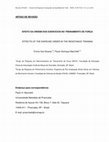
Several studies have been showed that the exercises' order can influence the neuromuscular pe... more Several studies have been showed that the exercises' order can influence the neuromuscular performance during a training session, and their responses to the training. The aim of the present study was to review the scientific literature on the exercises' order effects on neuromuscular performance during resistance training. It is observed that the effect of the exercises' order during a training session can influence the neuromuscular performance when performed at the beginning of the training session when compared to the end of the training session. The subjective perception of effort does not seem to be affected by the exercises' order and the central nervous system seems to change the pattern of the muscle recruitment for multijoint exercise when preceded by a single-joint exercise, apparently increasing the request of synergistic muscles. Larger rest intervals seem to affect less the neuromuscular performance when compared to smaller intervals, regardless of the s...
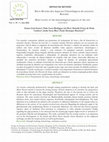
Um exercício comumente utilizado por praticantes do treinamento de força a fim de desenvolver os ... more Um exercício comumente utilizado por praticantes do treinamento de força a fim de desenvolver os músculos dorsais e flexores do cotovelo é o exercício remada. Diversas variações em sua execução são propostas a fim de alterar as exigências da musculatura alvo. Portanto o objetivo do presente estudo foi realizar uma breve revisão da literatura científica sobre aspectos anatômicos, cinesiológicos e biomecânicos do exercício remada e suas variações. Os principais músculos envolvidos são: braquirradial, braquial, bíceps braquial, deltóide posterior, latíssimo do dorso, redondo (maior/menor), trapézio, rombóides, subescapular e infraespinal. As principais alterações em sua realização estão relacionadas à execução da adução/abdução da escápula onde não foram observadas diferenças na atividade dos músculos envolvidos. Quanto ao ângulo de abdução da articulação glenoumeral (enfatizando a flexão ou abdução horizontal) foi observado que a flexão apresenta valores superiores na atividade muscul...










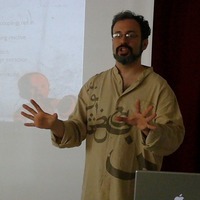
Uploads
Papers by Paulo Marchetti